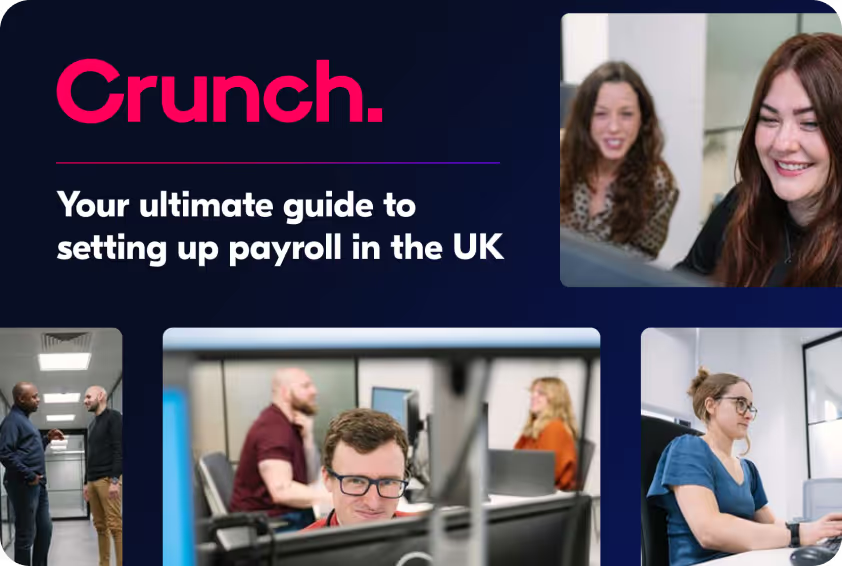National Insurance thresholds 101
National Insurance is a fundamental part of the UK tax system, affecting everyone from employees and employers to the self-employed. These National Insurance Contributions (NICs) fund state benefits and are crucial for building entitlement to the State Pension, but not everyone has to pay them.
Contributions are based on your earnings or profits, and you only have to pay if you earn above a certain amount, known as a threshold. Understanding these thresholds and how they affect you is a vital part of managing your finances.
Before we get into the thresholds, the first step is to know which Class of National Insurance applies to you:
- Class 1: Paid by employees on their earnings and by employers on their employees' earnings.
- Class 2: Self-employed people whose profits exceed the Lower Profits Threshold pay a flat weekly rate. Class 2 can also be paid voluntarily if profits are less than the lower profit threshold, which is recommended as it counts towards state pension entitlement.
- Class 3: A voluntary contribution that can be paid to fill gaps in your National Insurance record to protect your entitlement to state benefits.
- Class 4: A percentage-based contribution paid by self-employed people on their profits over a certain threshold, in addition to Class 2.
Within these classes are specific thresholds that determine if you need to pay NICs and how much you'll owe. In this article, we'll break down what each threshold means for the 2025/26 tax year.
{{national-insurance-calculator}}
Class 1 National Insurance thresholds: what you need to know
For employees, NICs are calculated as a percentage of earnings that fall between different thresholds. The main thresholds for the 2025/26 tax year are outlined below.
1. Lower Earnings Limit (LEL)
The Lower Earnings Limit (LEL) is the minimum you need to earn to get the benefits of National Insurance without having to pay anything. For 2025/26, the LEL is £6,500 a year. If you earn between the LEL and the Primary Threshold, you don't pay NICs, but you do build up qualifying years for your State Pension.
2. Primary Threshold (PT)
This is the point at which employees start paying National Insurance. The Primary Threshold is £12,570 for the 2025/26 tax year, which is aligned with the standard Personal Allowance for Income Tax. This means you won't pay a penny in NI or Income Tax until your earnings exceed this amount.
On earnings between the Primary Threshold and the Upper Earnings Limit, you'll pay NI at a rate of 8%.
3. Secondary Threshold (ST)
The Secondary Threshold is when employers start paying NICs on an employee's earnings. For 2025/26, this threshold is set at £5,000 a year. Employers pay contributions at a rate of 15% on any earnings above this limit. Many small businesses can claim the Employment Allowance, which is rising to £10,500, to cover their employer NICs bill.
4. Upper Earnings Limit (UEL)
Once an employee's salary goes above the Upper Earnings Limit (UEL), the rate of NI they pay drops significantly. The UEL is £50,270 for 2025/26. Any earnings above this limit are subject to NI at a reduced rate of 2%.
Example: An employee earns £40,000 a year.
Employee NI
- Earnings up to £12,570: 0% NI = £0
- Earnings from £12,570 to £40,000 (£27,430): 8% NI = £2,194.40
- Total annual employee NI: £2,194.40
Employer NI
- First £9,100: 0% NI = £0
- Rest (£40,000 − £9,100 = £30,900): 13.8% NI = £4,264.20
- Employer NI = £4,264.20
There are also other specific rates and thresholds, such as those for apprentices, employees under 21, and those working in Freeports, which you can find on the GOV.UK website.
Employee and employer national insurance contributions for 2025/2026
For employees, NICs are handled by your employer through the PAYE system. The thresholds determine the rate applied to your earnings.
There are also other specific rates and thresholds, such as those for apprentices, employees under 21, and those working in Freeports, which you can find on the GOV.UK website.
National Insurance for the self-employed
Self-employed people pay National Insurance differently. They deal with two separate classes, Class 2 and Class 4, which are calculated based on annual profits when filing a Self Assessment tax return.
Class 2 National Insurance
Class 2 National Insurance is a flat-rate £3.50 per week, but it is now entirely voluntary.
- The weekly rate for Class 2 NICs is £3.50.
- If your profits are below the Small Profits Threshold, you don't have to pay, but you can choose to make voluntary contributions to protect your State Pension entitlement.
{{tax-guide}}
Class 4 National Insurance
Class 4 NICs are charged as a percentage of your profits. You only start paying Class 4 once your profits exceed the Lower Profits Limit (LPL).
- Lower Profits Limit (LPL): £12,570 per year.
- Upper Profits Limit (UPL): £50,270 per year.
The rates for Class 4 NICs in 2025/26 are:
- 6% on profits between the LPL (£12,570) and UPL (£50,270).
- 2% on profits above the UPL (£50,270).
Example: A self‑employed person has annual profits of £30,000.
Class 2 National Insurance:
- Since 6 April 2024, Class 2 NICs are no longer compulsory.
- Profits of £6,845 or more automatically give you a qualifying year for State Pension purposes.
- You can choose to pay Class 2 voluntarily (£3.50 × 52 weeks = £182) if you want to maintain consistency in your NI record or for other benefit entitlements.
Class 4 National Insurance:
- Lower Profits Limit (LPL): £12,570
- Profits above the LPL: £30,000 − £12,570 = £17,430
- NICs on this slice at 6% = £1,045.80
Total NI payable:
- If you do not pay Class 2 voluntarily: £1,045.80
- If you do pay Class 2 voluntarily: £1,227.80
If that sounds confusing, don't worry. We have a guide to both Class 2 and Class 4 contributions to make things simpler. Make sure to check out our UK tax rates, thresholds and allowances article for more information.
{{national-insurance-calculator}}
Protecting your State Pension with voluntary contributions
Whether you're employed or self-employed, if your earnings are low, you might not have to pay National Insurance. However, this can leave gaps in your NI record, which could affect your future entitlement to certain state benefits.
To receive the full new State Pension, you typically need 35 qualifying years of National Insurance contributions. If you have gaps, you can make voluntary contributions (known as Class 3, or voluntary Class 2 for the self-employed) to fill them.
It's important to check your record and act if needed. From 6 April 2025, the window to pay for gaps in your record will be limited to the previous six tax years.
Determine your National Insurance contributions with Crunch
Now you understand how National Insurance thresholds for 2025/26 impact the contributions you need to make. Here are the key points to remember:
- Employees start paying Class 1 NICs at 8% on earnings above the Primary Threshold of £12,570. The rate drops to 2% for earnings over £50,270.
- Employers pay Class 1 NICs at 15% on an employee's earnings above the Secondary Threshold of £5,000.
- Self-employed people pay NICs based on profit.
- Class 2 is a flat weekly rate of £3.50.
- Class 4 is a percentage-based contribution paid on profits over £12,570.
Now that you understand the thresholds, try our National Insurance calculator to see how much you might have to pay.
If you'd like more help with your NICs and wider tax obligations, get in touch with one of our experts today to see how our accountancy software can make tax easier than ever.


.svg)

.svg)



.webp)





.avif)









